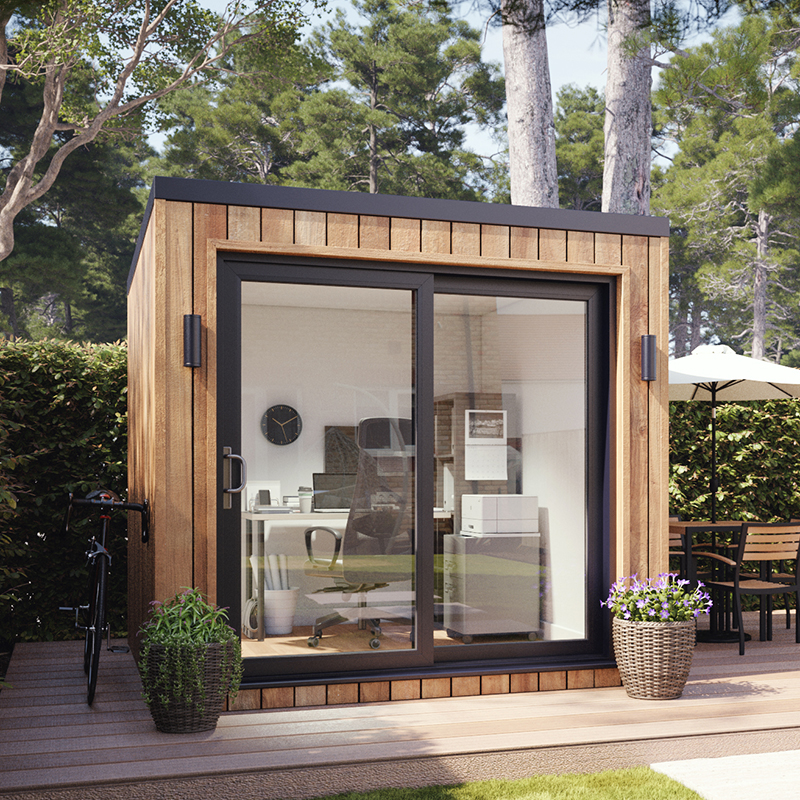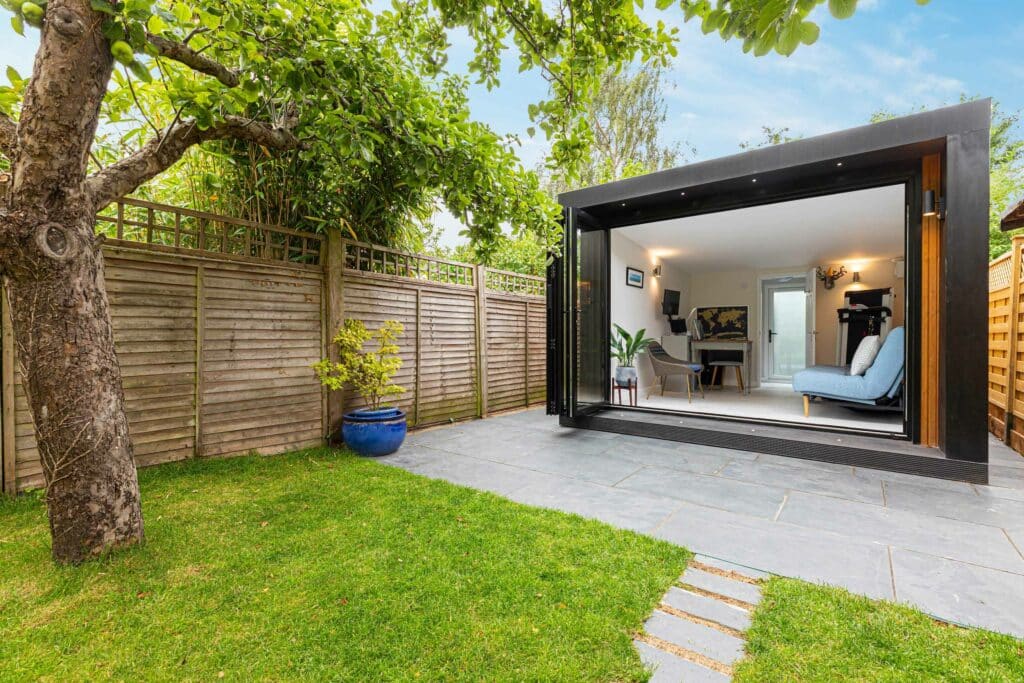Great News For Planning Permission For Garden Buildings
Wiki Article
What Planning Permission Are You Required To Get For Gardens, Etc. In Terms Of Highways Concerns?
Transportation issues can affect the need for a plan permit for the construction of garden offices, conservatories outhouses, garden extensions or outhouses. These are the most important considerations to consider to consider when planning for highways
Planning permission is required if the structure is in conflict with drivers' vision lines or intersections at bends or junctions of the road. The planning authority determines if the structure poses a risk for road safety.
The Highway is nearby:
Typically, buildings near the highway like front gardens or extensions that are located close to the street require approval for planning. There are strict distance restrictions to ensure that the construction won't interfere with road traffic.
Access and Egress
Planning permission will be required for any modifications to the access points. This could include the creation of new driveways, or changing existing ones to accommodate the new design. The egress and access points must be secured to avoid disrupting traffic.
Parking Facility
If the proposed structure is expected to alter existing parking spaces or will require parking for additional vehicles the planning permit is needed. The planning authority determines whether or not the development offers enough parking space, and if it does not cause congestion in parking on streets.
Traffic Generation
Planning permission will be required for projects that are likely to create more traffic, such gardens that serve as offices for business that have clients on site. The planning authority will determine what the effect of the local traffic flow and road safety is likely to affect.
Impact on Pedestrian Access
If the structure proposed is encroaching on pavements or pedestrian pathways, planning permission is required. The safety of pedestrians as well as ensuring they have the ability to be able to access the site is essential.
Construction Impact on Highways
The impact of construction activities on highways, including the movement of heavy vehicles and temporary obstructions could require planning permission. The planning authorities can establish conditions that reduce disruptions to the road network during construction.
Drainage and water runoff
Another aspect to consider is the effect of the development on runoff and drainage water, particularly how it affects roads. Planning approval ensures that the proposed structure won't cause flooding or drainage issues which could negatively impact the highway.
Street Furniture and Utilities
Planning permission is required if the proposed construction is likely to affect the street furniture, underground utilities or both (e.g. water cables, pipes, etc.). Planning authorities will work with agencies to resolve these problems.
Conformity to Highway Authority Guidelines:
The local highway authority may have specific guidelines for developments near highways. The planning permission will ensure that these rules are adhered to in order to keep the efficiency of roads and ensure safety.
Noise and disturbances from traffic
If the proposed building will likely to cause more disturbance or noise due to traffic (e.g., a garden office that receives visitors or deliveries) the planning permit is required to evaluate and reduce the impact.
Public Transport Accessibility
Planning permission is required to permit developments that may be detrimental to public transport facilities, such as stations or bus stops. The impact on passengers of public transport and the integration into the transport system is taken into account.
In conclusion, highway concerns are a major element in the process of approval of garden rooms, conservatories or garden extensions. In order to avoid any negative effects on traffic, pedestrian accessibility, road safety or overall infrastructure, it's essential that the development proposed does not affect these factors. Meetings with the local authority responsible for planning as well as the highway authority during the early stages of planning could address issues and ensure that the development is in compliance with the relevant regulations. Have a look at the recommended office outhouse for blog info including what size garden room without planning permission, small garden office, Tring garden rooms, outhouse garden, costco garden rooms, what size garden room without planning permission uk, garden room or extension, what size garden room without planning permission uk, composite garden rooms, garden rooms in St Albans and more.

What Planning Permission Is Required For Garden Spaces, Etc. Of Environmental Impact?
If you're planning to build garden rooms, conservatories, outhouses, garden offices or extension, weighing the impact on the environment is essential and may determine the need for permission to plan. Here are a few of the most important environmental factors that you must consider: Biodiversity, wildlife, and the other natural resources.
If the proposed construction will affect the habitat of wildlife in the area like hedgerows, trees, or ponds, planning permission is required. To minimize and evaluate the impact the environmental impact, an eco-survey could be necessary.
Protected Species And Habitats
If the site is home to species that are protected (e.g., bats, newts, etc.)) or within or near protected habitats (e.g., Sites of Special Scientific Interest : SSSI) Planning permission is essential. To ensure their protection, specific precautions must be taken.
Tree Preservation Orders:
A planning permit is needed for every construction project that involves the removal or modification of of trees that are protected by TPOs. Local authorities will assess the impact of any proposed changes and may require the replacement of trees or mitigation measures.
Risk of flooding and Water Management Risk and Water Management
Permission to develop in flood prone areas or near bodies of water is necessary. An assessment of flood risk (FRA) might be required to make sure that the structure is capable of draining and doesn't increase the risk of flooding.
Sustainability in construction:
You may need planning permission to ensure that the construction and materials are sustainable. This may include considerations regarding insulation, energy efficiency, and carbon emissions of construction materials.
Surface Runoff and Drainage
The impact of the new structure on surface water drainage and runoff is an important environmental consideration. Planning permission is required for proper drainage systems to avoid flooding and waterlogging.
Soil and Land stability:
A planning permit is needed if the proposed construction may impact the stability of the soil or land. It includes issues such as subsidence and soil erosion on sloped areas.
Air Quality:
Planning permits are required for developments close to industrial zones or major highways that can impact the local air quality. This is to ensure that the levels of air pollution remain within acceptable limits. Additionally, mitigation measures are to be implemented.
Noise Pollution:
Planning permission is required when the construction of the garden or an extension will likely cause substantial noise, for example a music studio or workshop. The local council will assess the levels of noise and their possible impact on neighbors and the environmental impact.
Waste Management:
The management of waste during construction and afterward is crucial. Planning permission will ensure adequate provisions for waste management and recycling to minimize the impact on the environment.
Energy Efficiency
Planning permission could include the need to improve energy efficiency, for example the utilization of solar panels, high-performance glazing, or other green technologies. This can reduce the carbon footprint of the building.
Environmental Regulations Compliance:
Environmental regulations at both local and national levels as well as local level, such as the UK Environmental Protection Act. Planning permission assures that all legal obligations are met and that the development is sustainable for the environment.
The planning permissions granted for conservatories or gardens, as well as outhouses, office buildings and garden offices must consider various environmental aspects. To ensure that the construction planned is sustainable it is essential to speak with local planning authorities prior to the planning stage as you can. Have a look at the best contemporary garden rooms uk for blog advice including outhouse uk, garden rooms near me, costco outbuildings, Tring garden rooms, garden room planning permission, garden room or extension, costco garden office, best electric heater for cabin, costco outhouse, do you need planning permission for a garden room and more.

In Terms Of Agricultural Land, What Kind Of Planning Permission Do You Require To Construct Gardens, Or Other Structures?
If you plan to build the conservatory, an office, or an outhouse or expand your property it is necessary to apply for permission to plan. These are the most important elements Change of Use
The land used for agriculture is usually used for agriculture, as well as other related activities. Planning permission is usually needed to alter the land's use to gardens or residential. This is due to an alteration in its use as a farm.
Permitted Development Rights:
Agricultural land often has different development rights that are permitted compared with residential land. For instance, certain types of agricultural buildings can be constructed without planning permission, but these rights are typically for agricultural-related structures, not residential garden rooms or offices.
Size and Scale
The size of the proposed building will have an impact on the need for planning approval. Larger buildings or those that cover a substantial part of the land are more likely to require planning permission.
The impact on agricultural use
Planning permission might be required when the proposed structure is likely to affect the use of land for agriculture, for example by reducing the space available for crops and livestock.
Green Belt Land:
If the land for agriculture is also designated as Green Belt, there are additional restrictions aimed at preventing urban sprawl and protecting open space. Green Belt land is subject to strict criteria and permits for building construction of new structures.
Design and Appearance
The design and style of the new structure should be in harmony with the rural nature of the region. Planning permission ensures the proposed structure doesn't negatively affect the landscape.
Environmental Impact:
It is essential to take into account the environmental impact before building on an agricultural property. An environmental assessment may be required for planning approval to ensure that a new structure will not cause harm to wildlife habitats or the local ecosystem.
The proximity of the buildings
The planning requirements could be impacted due to the close proximity of a proposed garden office or space to an existing agricultural building. Buildings that are located near farms may be seen differently from those constructed in open fields.
Access to infrastructure
It is crucial to think about the impact of the new building on access and infrastructure such as roads, water and waste management. If you seek planning permission, the city will evaluate whether the infrastructure is able to support the new building.
Class Order:
Planning law identifies specific classes of land to be used for agricultural purposes. To ensure that the proposed usage is in line with local policies regarding planning It is often required to seek planning approval prior to changing the class.
Local Planning Policies
Local planning authorities are required to have specific policies regarding agriculture-related land. These policies will help determine whether planning permits are granted to construction projects that are not agricultural, while taking into account elements like local development plans and community requirements.
National Planning Policy Framework
In the UK National Planning Policy Framework is a framework that offers guidelines for the development of land and its use. Planning permissions for agricultural land are analyzed in perspective of the NPPF. This emphasizes sustainable growth and rural areas.
Planning approval is required for extensions, conservatories, outhouses or garden offices on agricultural land. This is due to the fact that the land needs to be modified to meet local and national planning policy. Consulting with the local authority for planning is vital to identify the exact requirements and get the necessary approvals. Read the recommended garden room max height for blog tips including garden rooms near me, garden outhouse, outhouse building, ground screws vs concrete, outhouses for garden, insulated garden rooms, myouthouse, luxury outhouse, garden room vs extension, what size garden room without planning permission uk and more.
